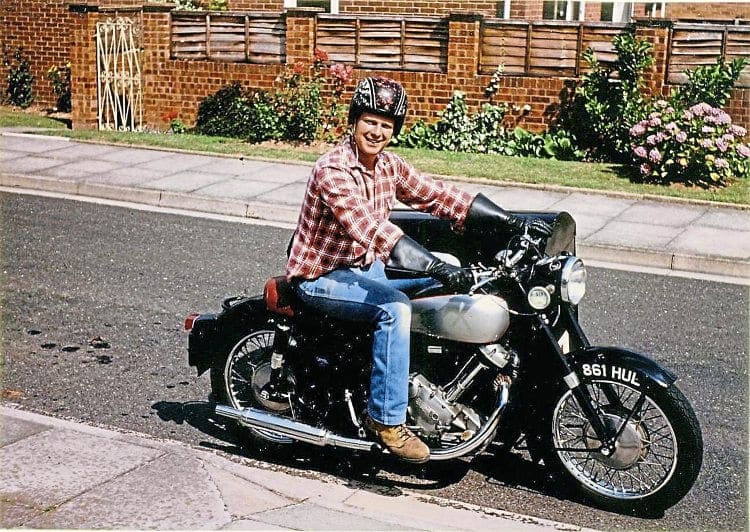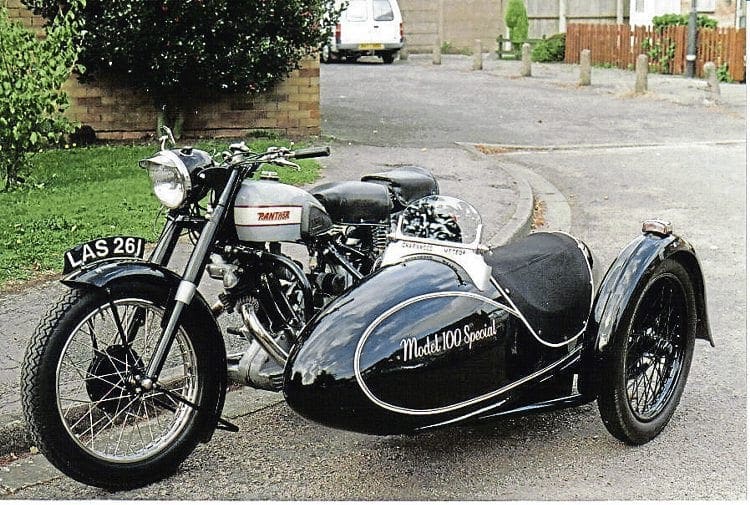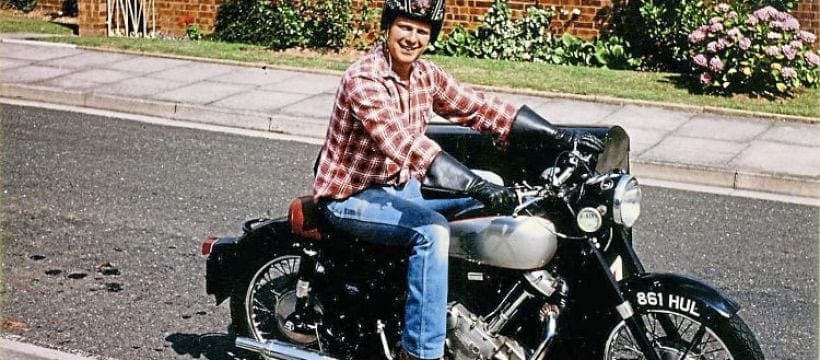Last month Mick Payne told about Bill Moore’s abiding love affair with Yorkshire-built Panther motorcycles and here he continues the story.
According to popular reason, “Panthers have got that enormous cylinder because they have such a long stroke.” True, but not true, if you know what I mean! Certainly they do have a stroke/bore ratio leaning to the long-stroke side, but they aren’t quite as extreme as many think.

Another of Bill Moore’s lovely outfits is a BSA M20 with a sign-written box and BSA’s side-valve sloggers have long strokes too.
A Panther 100 has a bore/stroke ratio of 87mm x 100mm, or 0.87:1, whereas a BSA M21 is 81 x 112, or 0.73:1. An even greater stroke/bore ratio can be found in Norton’s Big 4, and even that other doyen of the sidecar fraternity, the BSA A10, has a 70 bore x 84 stroke, giving pretty much the same figure as Panther’s long-stroke Model 120. Things aren’t always what they seem, and the Panther looks longer because of the stressed engine.
Enjoy more Old Bike Mart reading in the monthly newspaper.
Click here to subscribe & save.
This takes me off on a tangent, for as an ex-engineer I have always wondered why motorcycle manufacturers stuck to the full-loop frame for so long. To my mind, much of that tubing is superfluous.

Think about it. What’s the most rigid – a piece of tube or a cast iron and alloy engine unit? The cradle frame is pretty much a throwback to the days when the pilot was expected to give a bit of light pedal assistance, and the engine had to have a home too.
Read more in the May issue of OBM – on sale now!
Advert
 Enjoy more Old Bike Mart reading in the monthly paper. Click here to subscribe.
Enjoy more Old Bike Mart reading in the monthly paper. Click here to subscribe.


